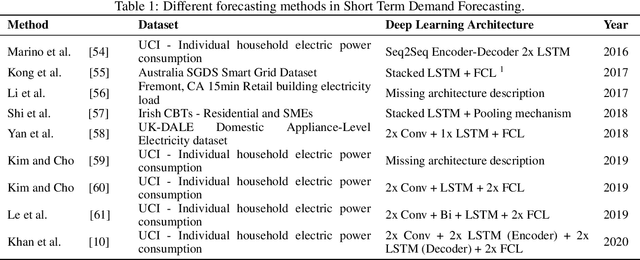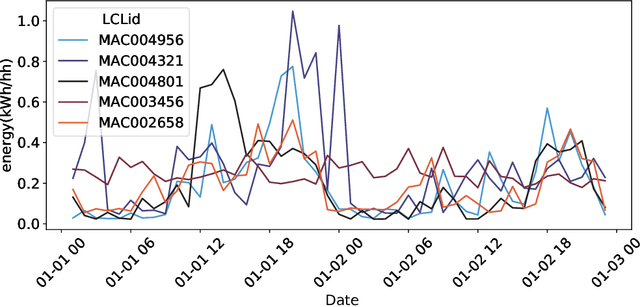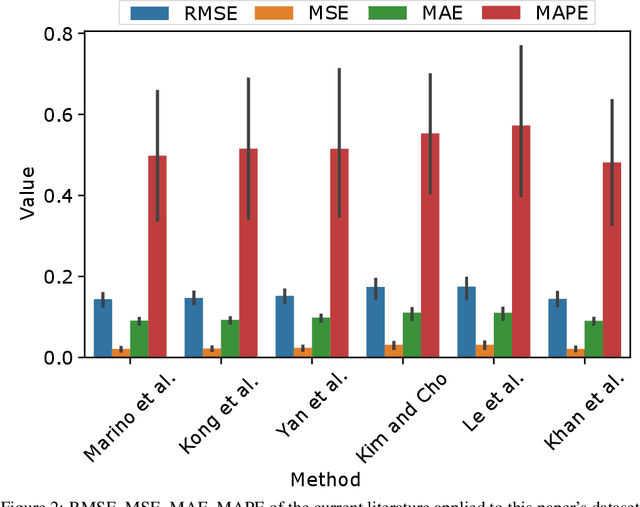Gilbert Fridgen
FINATRAX - Digital Financial Services and Cross-Organisational Digital Transformations
Benchmarking Pre-Trained Time Series Models for Electricity Price Forecasting
Jun 09, 2025Abstract:Accurate electricity price forecasting (EPF) is crucial for effective decision-making in power trading on the spot market. While recent advances in generative artificial intelligence (GenAI) and pre-trained large language models (LLMs) have inspired the development of numerous time series foundation models (TSFMs) for time series forecasting, their effectiveness in EPF remains uncertain. To address this gap, we benchmark several state-of-the-art pretrained models--Chronos-Bolt, Chronos-T5, TimesFM, Moirai, Time-MoE, and TimeGPT--against established statistical and machine learning (ML) methods for EPF. Using 2024 day-ahead auction (DAA) electricity prices from Germany, France, the Netherlands, Austria, and Belgium, we generate daily forecasts with a one-day horizon. Chronos-Bolt and Time-MoE emerge as the strongest among the TSFMs, performing on par with traditional models. However, the biseasonal MSTL model, which captures daily and weekly seasonality, stands out for its consistent performance across countries and evaluation metrics, with no TSFM statistically outperforming it.
Towards Effective EU E-Participation: The Development of AskThePublic
Apr 04, 2025Abstract:E-participation platforms can be an important asset for governments in increasing trust and fostering democratic societies. By engaging non-governmental and private institutions, domain experts, and even the general public, policymakers can make informed and inclusive decisions. Drawing on the Media Richness Theory and applying the Design Science Research method, we explore how a chatbot can be designed to improve the effectiveness of the policy-making process of existing citizen involvement platforms. Leveraging the Have Your Say platform, which solicits feedback on European Commission initiatives and regulations, a Large Language Model based chatbot, called AskThePublic is created, providing policymakers, journalists, researchers, and interested citizens with a convenient channel to explore and engage with public input. By conducting 11 semistructured interviews, the results show that the participants value the interactive and structured responses as well as enhanced language capabilities, thus increasing their likelihood of engaging with AskThePublic over the existing platform. An outlook for future iterations is provided and discussed with regard to the perspectives of the different stakeholders.
CognArtive: Large Language Models for Automating Art Analysis and Decoding Aesthetic Elements
Feb 04, 2025Abstract:Art, as a universal language, can be interpreted in diverse ways, with artworks embodying profound meanings and nuances. The advent of Large Language Models (LLMs) and the availability of Multimodal Large Language Models (MLLMs) raise the question of how these transformative models can be used to assess and interpret the artistic elements of artworks. While research has been conducted in this domain, to the best of our knowledge, a deep and detailed understanding of the technical and expressive features of artworks using LLMs has not been explored. In this study, we investigate the automation of a formal art analysis framework to analyze a high-throughput number of artworks rapidly and examine how their patterns evolve over time. We explore how LLMs can decode artistic expressions, visual elements, composition, and techniques, revealing emerging patterns that develop across periods. Finally, we discuss the strengths and limitations of LLMs in this context, emphasizing their ability to process vast quantities of art-related data and generate insightful interpretations. Due to the exhaustive and granular nature of the results, we have developed interactive data visualizations, available online https://cognartive.github.io/, to enhance understanding and accessibility.
Designing Trustful Cooperation Ecosystems is Key to the New Space Exploration Era
Feb 08, 2024

Abstract:In the emerging space economy, autonomous robotic missions with specialized goals such as mapping and mining are gaining traction, with agencies and enterprises increasingly investing resources. Multirobot systems (MRS) research has provided many approaches to establish control and communication layers to facilitate collaboration from a technical perspective, such as granting more autonomy to heterogeneous robotic groups through auction-based interactions in mesh networks. However, stakeholders' competing economic interests often prevent them from cooperating within a proprietary ecosystem. Related work suggests that distributed ledger technology (DLT) might serve as a mechanism for enterprises to coordinate workflows and trade services to explore space resources through a transparent, reliable, non-proprietary digital platform. We challenge this perspective by pointing to the core technical weaknesses of blockchains, in particular, increased energy consumption, low throughput, and full transparency through redundancy. Our objective is to advance the discussion in a direction where the benefits of DLT from an economic perspective are weighted against the drawbacks from a technical perspective. We finally present a possible DLT-driven heterogeneous MRS for map exploration to study the opportunities for economic collaboration and competitiveness.
Trustful Coopetitive Infrastructures for the New Space Exploration Era
Feb 08, 2024



Abstract:In the new space economy, space agencies, large enterprises, and start-ups aim to launch space multi-robot systems (MRS) for various in-situ resource utilization (ISRU) purposes, such as mapping, soil evaluation, and utility provisioning. However, these stakeholders' competing economic interests may hinder effective collaboration on a centralized digital platform. To address this issue, neutral and transparent infrastructures could facilitate coordination and value exchange among heterogeneous space MRS. While related work has expressed legitimate concerns about the technical challenges associated with blockchain use in space, we argue that weighing its potential economic benefits against its drawbacks is necessary. This paper presents a novel architectural framework and a comprehensive set of requirements for integrating blockchain technology in MRS, aiming to enhance coordination and data integrity in space exploration missions. We explored distributed ledger technology (DLT) to design a non-proprietary architecture for heterogeneous MRS and validated the prototype in a simulated lunar environment. The analyses of our implementation suggest global ISRU efficiency improvements for map exploration, compared to a corresponding group of individually acting robots, and that fostering a coopetitive environment may provide additional revenue opportunities for stakeholders.
Federated Learning: Organizational Opportunities, Challenges, and Adoption Strategies
Aug 04, 2023


Abstract:Restrictive rules for data sharing in many industries have led to the development of \ac{FL}. \ac{FL} is a \ac{ML} technique that allows distributed clients to train models collaboratively without the need to share their respective training data with others. In this article, we first explore the technical basics of FL and its potential applications. Second, we present a conceptual framework for the adoption of \ac{FL}, mapping organizations along the lines of their \ac{AI} capabilities and environment. We then discuss why exemplary organizations in different industries, including industry consortia, established banks, public authorities, and data-intensive SMEs might consider different approaches to \ac{FL}. To conclude, we argue that \ac{FL} presents an institutional shift with ample interdisciplinary research opportunities for the business and information systems engineering community.
Secure Federated Learning for Residential Short Term Load Forecasting
Nov 17, 2021



Abstract:The inclusion of intermittent and renewable energy sources has increased the importance of demand forecasting in power systems. Smart meters can play a critical role in demand forecasting due to the measurement granularity they provide. Consumers' privacy concerns, reluctance of utilities and vendors to share data with competitors or third parties, and regulatory constraints are some constraints smart meter forecasting faces. This paper examines a collaborative machine learning method for short-term demand forecasting using smart meter data as a solution to the previous constraints. Privacy preserving techniques and federated learning enable to ensure consumers' confidentiality concerning both, their data, the models generated using it (Differential Privacy), and the communication mean (Secure Aggregation). The methods evaluated take into account several scenarios that explore how traditional centralized approaches could be projected in the direction of a decentralized, collaborative and private system. The results obtained over the evaluations provided almost perfect privacy budgets (1.39,$10e^{-5}$) and (2.01,$10e^{-5}$) with a negligible performance compromise.
 Add to Chrome
Add to Chrome Add to Firefox
Add to Firefox Add to Edge
Add to Edge